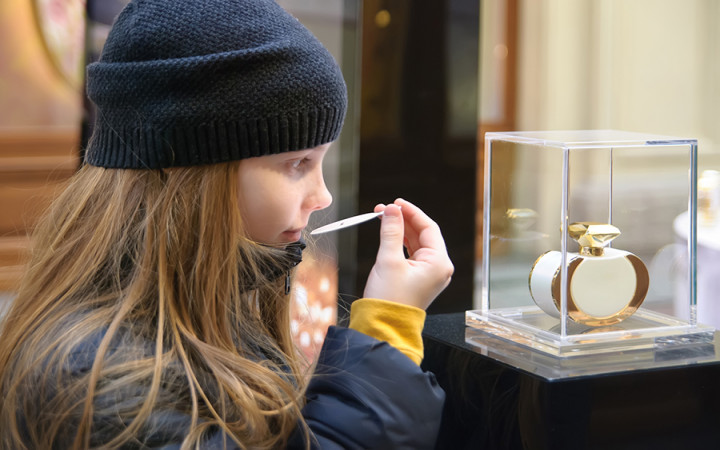Today’s Wonder of the Day was inspired by Briana. Briana Wonders, “How is perfume made?” Thanks for WONDERing with us, Briana!
Do you have some special ladies in your life? If you're lucky, you might have some sisters, aunts, mothers, and grandmothers who dote on you and make your life extra special.
When Christmas or a birthday rolls around, you can thank those special ladies in your life by getting them a gift they'll appreciate. But what should you get them? Flowers? Flowers are nice, but they can die quickly.
How about chocolate? Chocolate is delicious, but it doesn't last long either What can you get that will stick around for a while? How about a special smell?
Perfume is a popular gift for just about any occasion. Who doesn't like to smell good? With a few squirts, you can smell good all day long, and a bottle of perfume can last for months.
Experts believe the history of perfume can be traced back over 5,000 years to the ancient Egyptians. They used herbs, flowers, and scented gums, such as frankincense and myrrh, to create scented incense and solutions used during religious rituals and as part of the embalming process.
The earliest perfumes used a wide variety of natural ingredients, some of which you might find surprising and maybe just a little bit gross. Can you imagine spraying yourself with musk (from musk deer glands), hyraceum (from petrified Hyrax feces), or ambergris (from whale vomit)?
Eww! While some of those scents still live on, they're mainly created in the laboratory today using a wide variety of synthetic chemicals. In fact, our modern synthetic perfumes got their start in the early 19th century as scientists began to expand their knowledge of organic chemistry.
Today's liquid perfume consists of three main ingredients: alcohol, water, and essential perfume oils. There are thousands of ingredients that perfume manufacturers can use, and the exact formula for a perfume is a closely-guarded secret.
Some perfume oils are manufactured in labs, while others are extracted from natural plants and flowers. Manufacturers use a variety of methods to extract fragrant oils from plants and flowers, including boiling, steam distillation, solvent extraction, enfleurage, maceration, and expression.
You may be WONDERing why perfume manufacturers dilute perfume oils with water and alcohol. It's not because they're trying to cheat you. Concentrated perfume oils can be overpowering.
Mixing them with water and alcohol helps to spread the smells out more evenly to create a more pleasant experience. In fact, most perfumes are designed to create a three-part smell consisting of top notes (the first smells your nose notices), heart notes (the lingering smell you tend to remember most), and base notes (the smells that remain the longest after application).
Perfume can be formulated with varying levels of perfume oil concentration. You may have noticed that perfumes often bear different French names. These names correspond to different perfume oil concentrations.
For example, parfum consists of at least 25% perfume oil. Eau de parfum contains 15-18% perfume oil, while eau de toilette contains 10% perfume oil. Eaux de cologne and other body sprays usually contain less than 10% perfume oil.




